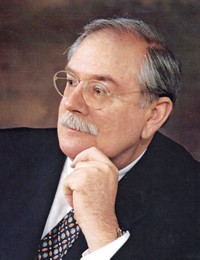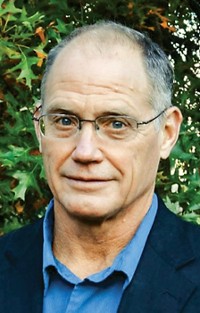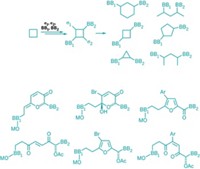Advertisement
Grab your lab coat. Let's get started
Welcome!
Welcome!
Create an account below to get 6 C&EN articles per month, receive newsletters and more - all free.
It seems this is your first time logging in online. Please enter the following information to continue.
As an ACS member you automatically get access to this site. All we need is few more details to create your reading experience.
Not you? Sign in with a different account.
Not you? Sign in with a different account.
ERROR 1
ERROR 1
ERROR 2
ERROR 2
ERROR 2
ERROR 2
ERROR 2
Password and Confirm password must match.
If you have an ACS member number, please enter it here so we can link this account to your membership. (optional)
ERROR 2
ACS values your privacy. By submitting your information, you are gaining access to C&EN and subscribing to our weekly newsletter. We use the information you provide to make your reading experience better, and we will never sell your data to third party members.
Synthesis
Arthur C. Cope Award
by Stu Borman
March 9, 2015
| A version of this story appeared in
Volume 93, Issue 10
It isn’t easy to list all the areas of chemistry that Stanford University’s Paul A. Wender has helped advance. But chemistry professor Kendall Houk of the University of California, Los Angeles, gives it a try.
“Wender and his coworkers have made enormous contributions to synthesis, photochemistry, organometallic chemistry, catalysis, mechanistic chemistry, drug delivery, chemical biology, and medicinal chemistry,” says Houk, a career-long collaborator on theoretical aspects of Wender’s work. “These contributions influence how we think about synthesis and reaction design; lead to new concepts, tools, and companies for drug delivery; and drive new preclinical leads for resistant cancer, HIV eradication, Alzheimer’s disease, and immunotherapy.”
“For over 30 years, Paul Wender has been at the forefront of organic chemistry,” comments chemistry professor Larry E. Overman of UC Irvine, an expert on synthetic organic chemistry. “His influence on the current practice of organic synthesis is profound.”
In organic synthesis, Wender used concepts such as “ideal synthesis,” “step economy,” and “function-oriented synthesis” to promote the goal of low-step-number, high-yield, simple, safe, and environmentally benign molecular assembly techniques. In work spanning four decades, he and his coworkers developed concise syntheses of more than 40 targets, including the shortest synthesis of the anticancer agent paclitaxel and the first synthesis of the diterpene phorbol, the antineuropathic pain lead compound resiniferatoxin, the anti-Alzheimer’s and anticancer lead compound bryostatin-9, and the anti-HIV lead compound prostratin. Bryostatin analogs that Wender’s group has synthesized include some that are now in preclinical development.
In photochemistry, Wender and coworkers pioneered new photochemical reactions, such as arene-alkene photocycloadditions. They established selectivity rules to guide the use of such reactions in a number of syntheses, including a notably short (four step) synthesis of cedrene and similarly concise syntheses of more than 17 other targets representing a range of structural types.
And in organometallic chemistry, Wender and coworkers developed more than 25 new transition-metal-catalyzed cycloadditions. They include two-, three-, and four-component processes, exemplified by [5+2], [6+2], [5+2+1], [2+2+1], [5+2+1+1], and [2+2+2+2] cycloadditions that enable new routes to targets incorporating five- to nine-member rings.
“In addition to being a gifted synthetic chemist, Paul Wender has made outstanding contributions to chemical biology,” says chemical biologist Chaitan Khosla of Stanford University. “Very few synthetic chemists have had as broad and significant an impact on biology as Paul Wender.”
For example, Wender’s work in medicinal chemistry led to the design of prostratin and bryostatin analogs. The former are leads in efforts to eradicate HIV/AIDS, and the latter are leads for multiple conditions related to cognitive dysfunction.
And in drug delivery, Wender and coworkers first showed that the ability of HIV Tat protein to enter cells is a function of the number and spatial array of its guanidinium groups. This finding enabled them to design the first guanidinium-rich cell-penetrating “molecular transporters.”
They have since created new transporters based on peptoids, spaced peptides, oligocarbamates, dendrimers, oligocarbonates, and glycerol backbones and have shown that such transporters can deliver small molecules, peptides, proteins, dyes, plasmids, metals, liposomes, siRNAs, and nanoparticles into cells and tissues.
They used the transporters to deliver siRNAs to treat pachyonychia congenita, an orphan disease that causes proliferative growth in skin; to deliver molecules across cell walls into algae for genetic engineering, drug screening, and other purposes; and to overcome P-glycoprotein-based drug resistance, a major cause of chemotherapy failure. The field of guanidinium-rich transporter delivery has expanded from a handful of publications in 2000 to several hundred per year at present.
Wender earned a B.S. in chemistry at Wilkes College in 1969 and a Ph.D. in chemistry in Frederick E. Ziegler’s group at Yale University in 1973. He was a National Institutes of Health Postdoctoral Fellow in Gilbert Stork’s group at Columbia University in 1974, joined the faculty of Harvard University in the same year, and moved in 1982 to Stanford, where he is currently Bergstrom Professor of Chemistry and Professor (by courtesy) of Chemical & Systems Biology. Among other recognitions, Wender is a member of the National Academy of Sciences.






Join the conversation
Contact the reporter
Submit a Letter to the Editor for publication
Engage with us on Twitter